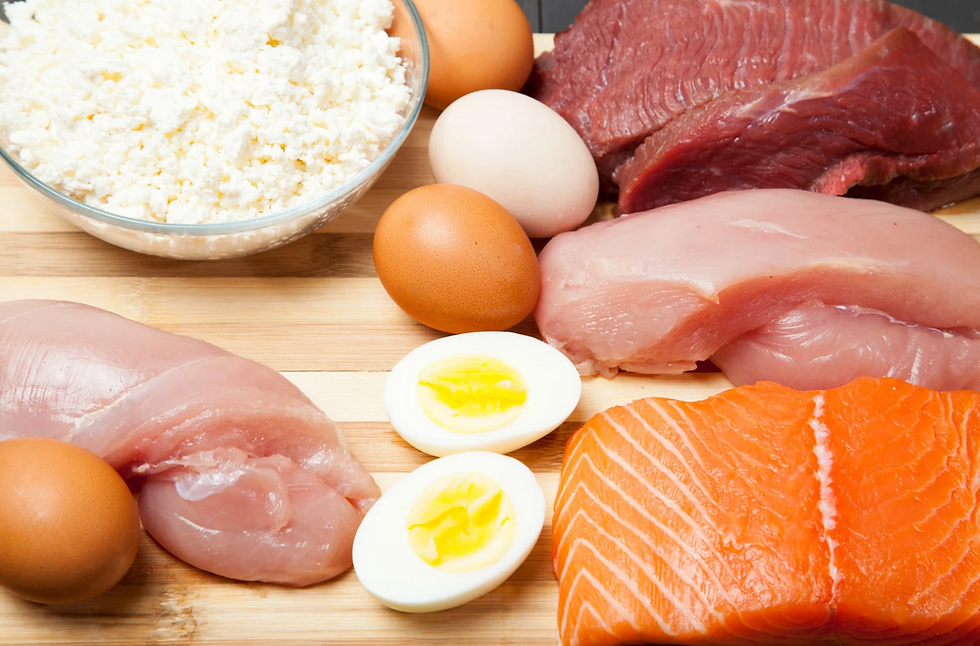Liver, The Number One Superfood
- Orsolya Szathmari

- Sep 12, 2023
- 3 min read
Liver and other organ meats have always been the preferred animal parts consumed by people. That’s no wonder, as they are full of bioavailable nutrients that make us healthy and strong. It is only during the last 50 years that they have lost their popularity.
Organ meats have been part of the diet of our grandparents, parents, and even us in our childhood. Nowadays in some countries they are not easily available anymore and many people have never even tasted any of them.

One of the most frequently consumed organs is liver. It contains the most bioavailable nutrients with an extremely high nutrient density. It is one of the most nutrient-dense foods that exists.
Liver is low in calories, rich in high-quality protein (20 g in 100 g liver), vitamins, especially B vitamins, and minerals. Containing all the essential and some of the non-essential amino acids, liver is one of the richest sources of amino acids among protein foods.

Compared to liver, many vitamins and minerals in plants come in non-bioavailable forms for humans. Vitamin A, K2, D and iron are good examples.
Focusing on a few extremely important nutrients found in liver, let’s examine why we all should consume it on a regular basis - around 400 g per week.
Choline- doesn’t occur in significant amounts in plants. Liver and egg yolks are its best source. Choline is crucial for brain and liver health, DNA synthesis, a good functioning nervous system, fat metabolism and cell structure. Choline deficiency is associated with heart disease, non-alcoholic fatty liver disease and neurodegenerative conditions.
Vitamin A - is found only in animal foods. Plant foods contain only carotenoids, the precursors of Vitamin A. It is important to note though, that its conversion rate to bioactive vitamin A (retinol) is usually very low.
Vitamin A is crucial for eye and skin health, as well as immune function and fetal development.
Vitamin D - is produced by our body when exposed to sunlight. However, we do not always get enough sun, so it is important to make sure that we get vitamin D also from food. Foods that are high in vitamin D are liver, different fish, cod liver, egg yolk and outside grown mushrooms.
Vitamin K - has two forms, K1 and K2. K1 is found in plants and K2 in animal sources. The preferred form for the body is K2. We need it for arterial health, calcium storage and bone density. Best sources are meat, liver and egg yolk.
Vitamin B 12 - deficiency of this vitamin is extremely common amongst vegetarians and vegans. It's a crucial nutrient, helps to form red blood cells, it's involved in healthy brain and nervous system function, in the production of DNA and cell metabolism. Liver is a great source, as well as red meat, fish and poultry.
Liver contains all the above mentioned nutrients and much more.
In the table below you can see the nutrient information of liver, compared to muscle meat, apple and broccoli.
Liver beats every plant in most of the bioavailable nutrients and it has also the advantage not to contain anti-nutrients contrary to plant-foods.
We often hear the argument that consuming liver is not healthy because it stores toxins. In reality liver doesn’t store or filter toxins but it chemically transforms them so that our body can get rid of these harmful chemical compounds. But the liver has also other important roles in the body, such as storing glucose and many essential nutrients and processing digested food from the gut.
And there is one more advantage - compared to meat and many other foods, liver is really cheap.
Liver is the perfect way to get our amino acids, multivitamins and minerals instead of synthetic supplements. Eaten regularly together with red meat, animal fat and even certain plants -if you like to consume them - will make your immune system strong and healthy.
Recipe tip: Pan fried liver with bacon

Cut liver into stripes or bigger slices. Fry some bacon bites in a pan. Add some extra fat if needed. Add the liver and fry for about 1-2 minutes both sides until it is nicely browned on the outside, yet still pink and juicy on the inside.
Serve by itself, with fried eggs, fried carrots or cooked vegetables.





Comments